Abstract
Rapidly growing Neurospora crassa does not produce laccase (p-diphenol:oxygen oxidoreductase; EC 1.10.3.2). Low concentrations of cycloheximide induce the production of this enzyme, most of which is secreted into the media. In general, limited inhibition of protein synthesis seems to derepress laccase synthesis since actinomycin D and, to a limited extent, puromycin also induce laccase production. Similarities in the conditions of laccase and tyrosinase induction, plus investigations with two tyrosinase regulatory mutants, suggest that the production of these two phenol oxidases is controlled by the same mechanism. As shown by polyacrylamide gel electrophoresis, most of the 10 to 12 proteins normally present in the medium virtually disappear during cycloheximide treatment. In contrast, the amounts of two proteins that are present in only very minor quantities, if at all, in normal culture filtrates increase dramatically. One of these proteins co-migrates with laccase, whereas the other has not been identified.
Full text
PDF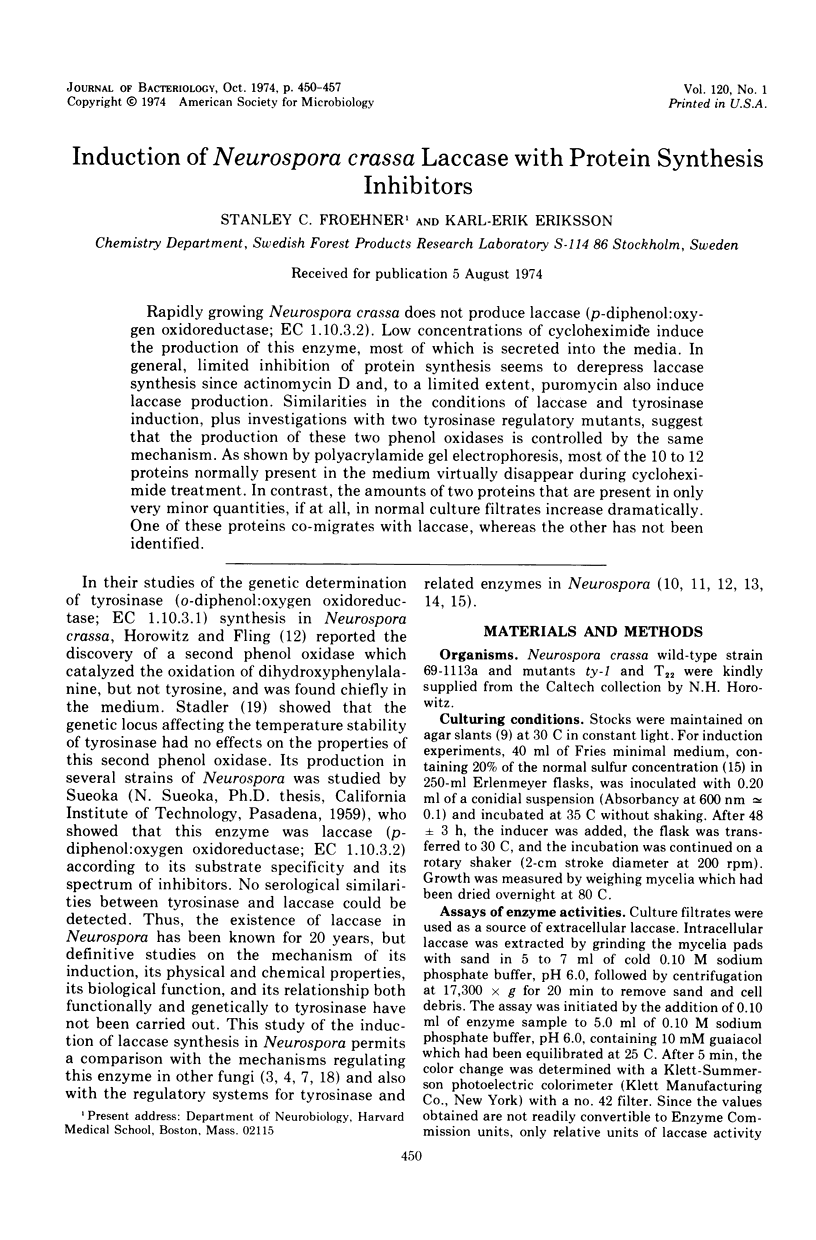

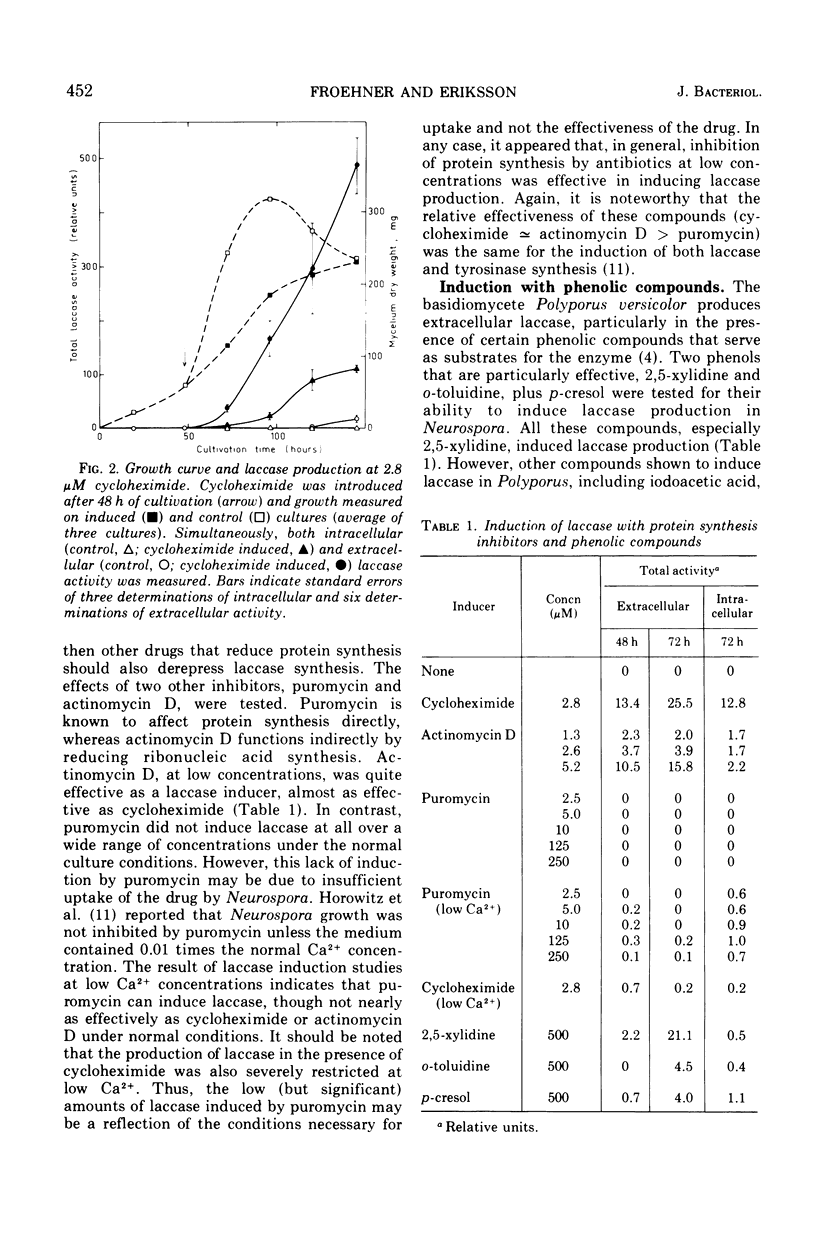
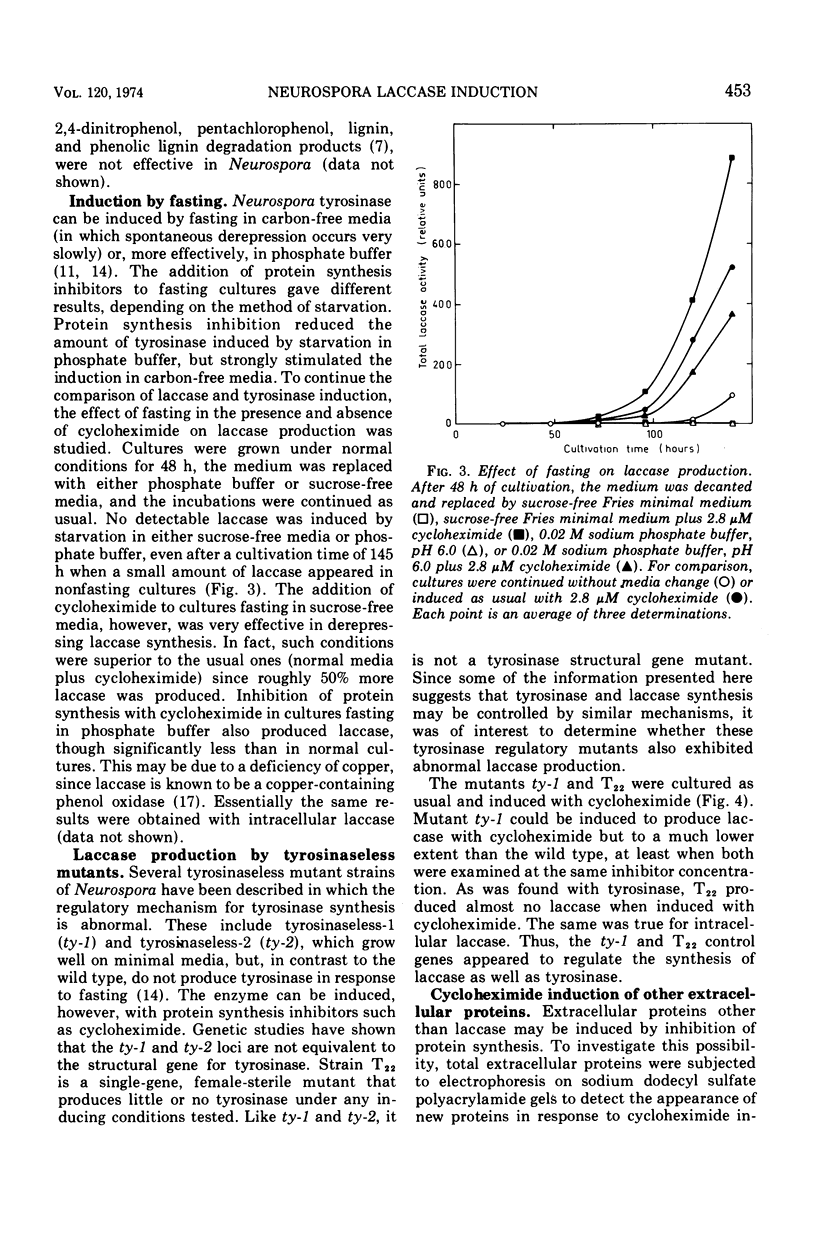
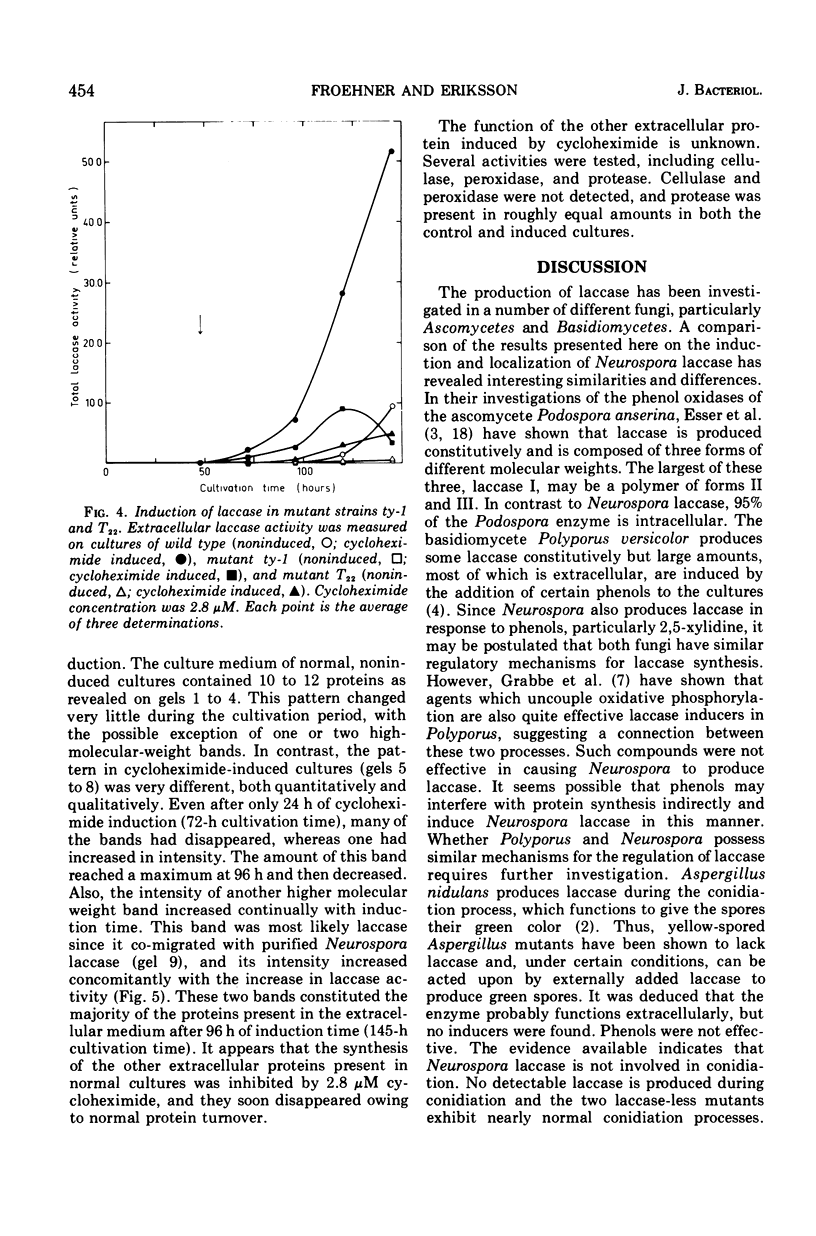
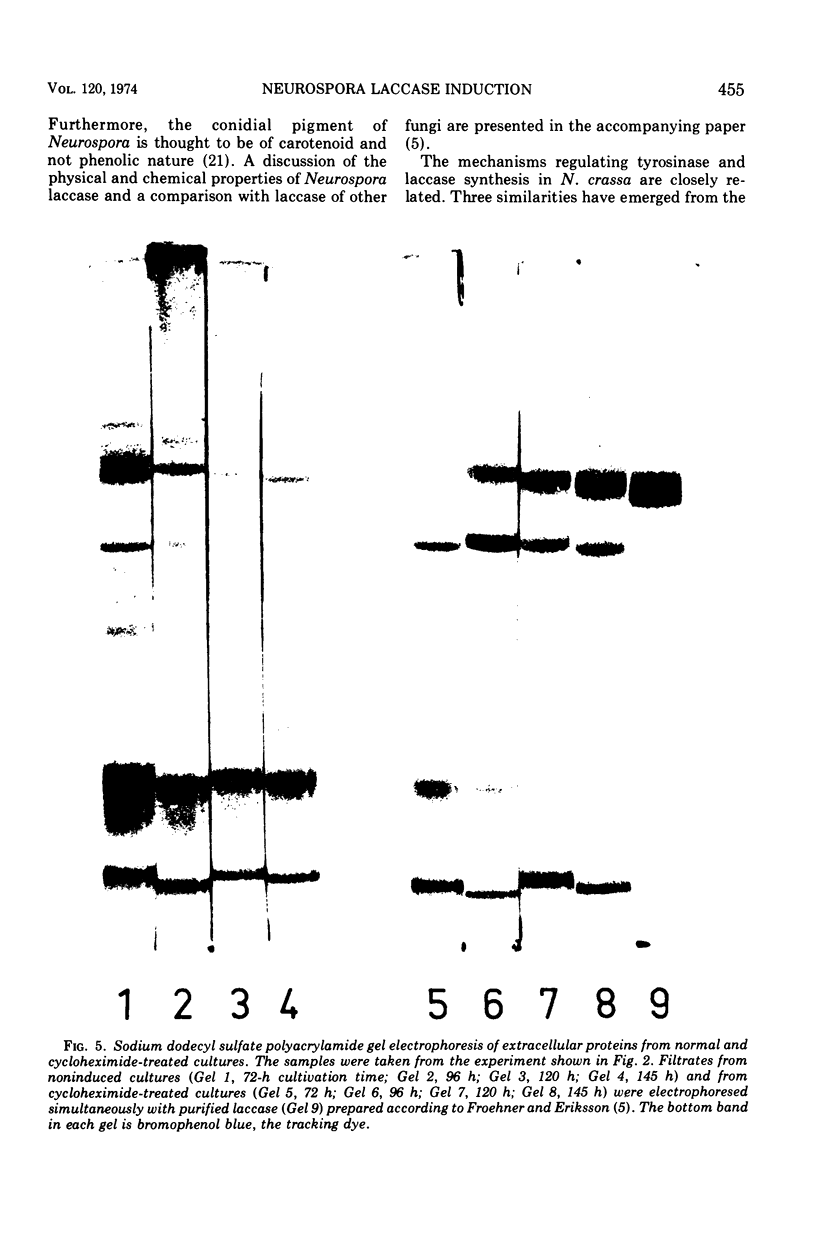
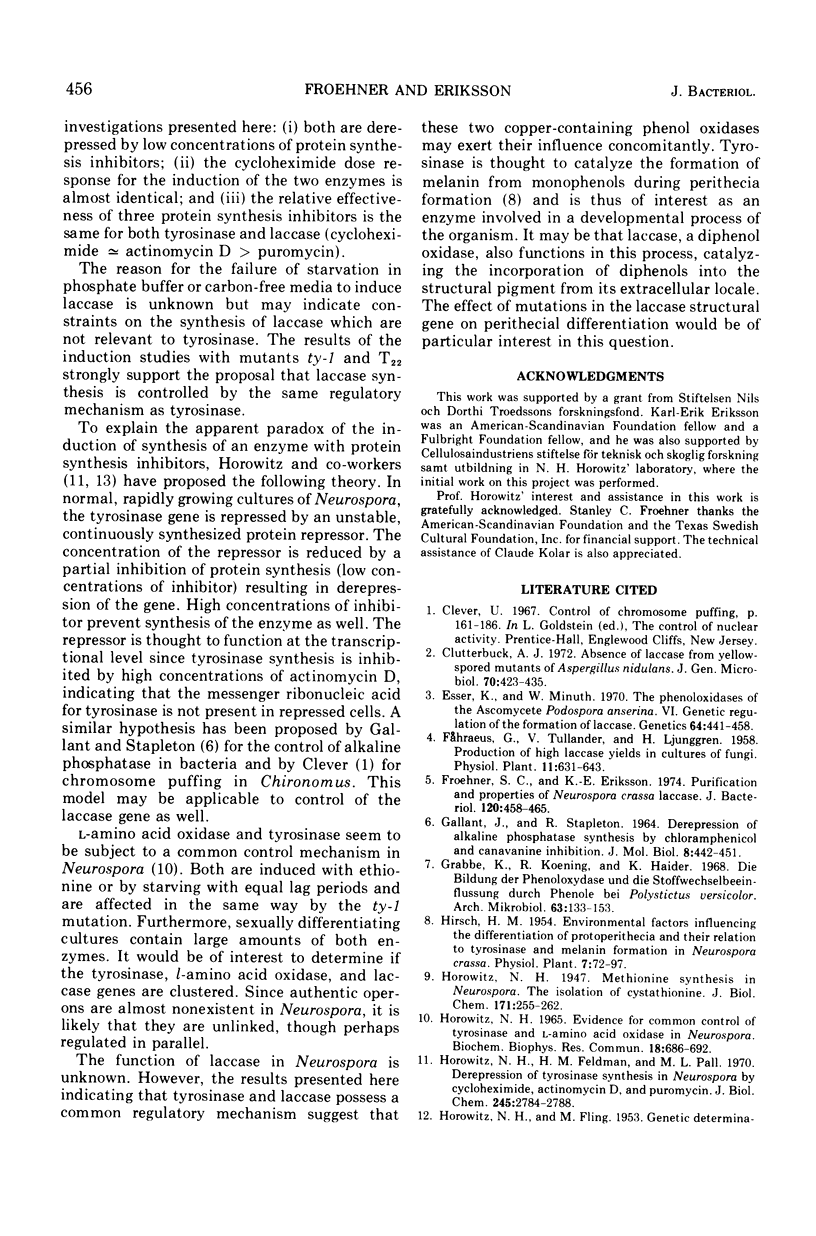
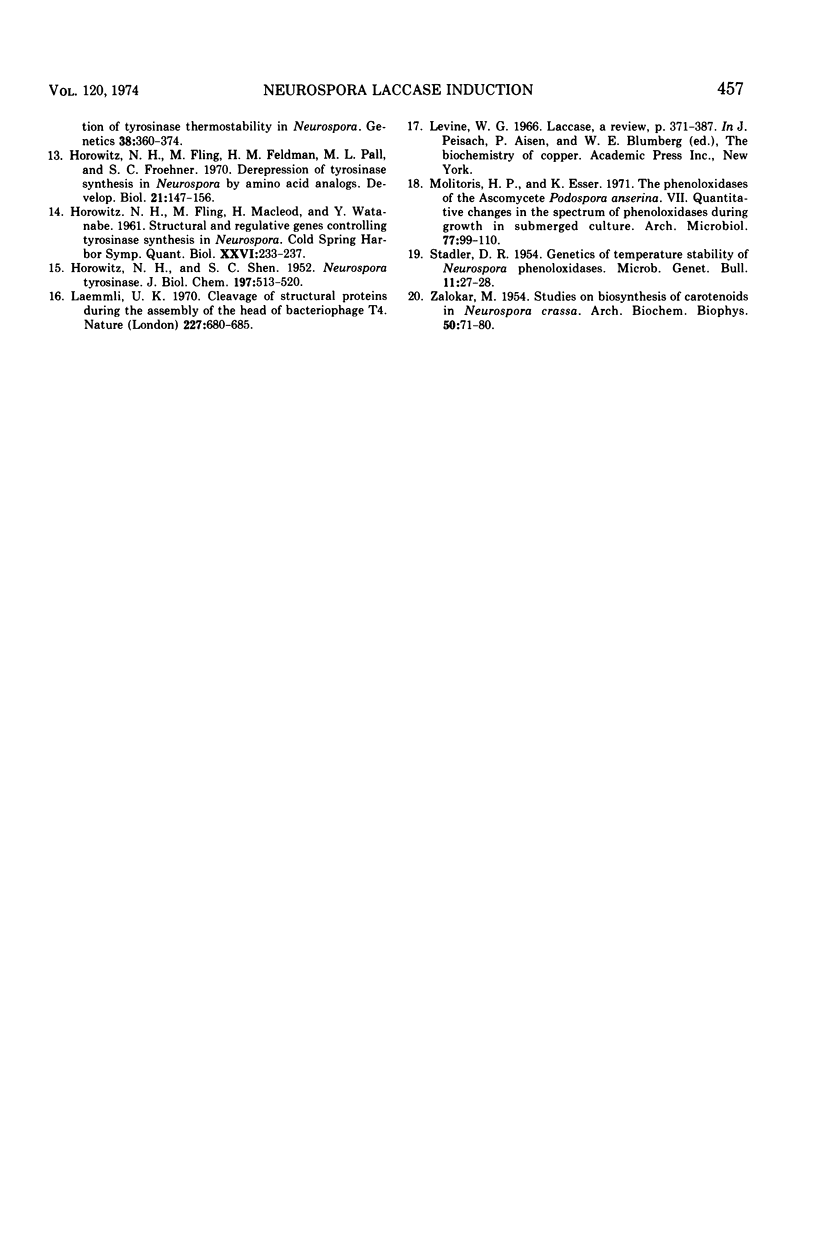
Images in this article
Selected References
These references are in PubMed. This may not be the complete list of references from this article.
- Clutterbuck A. J. Absence of laccase from yellow-spored mutants of Aspergillus nidulans. J Gen Microbiol. 1972 May;70(3):423–435. doi: 10.1099/00221287-70-3-423. [DOI] [PubMed] [Google Scholar]
- Esser K., Minuth W. The phenoloxidases of the ascomycete Podospora anserina. Communication 4. Genetic regulation of the formation of laccase. Genetics. 1970 Mar-Apr;64(3):441–458. [PMC free article] [PubMed] [Google Scholar]
- Froehner S. C., Eriksson K. E. Purification and properties of Neurospora crassa laccase. J Bacteriol. 1974 Oct;120(1):458–465. doi: 10.1128/jb.120.1.458-465.1974. [DOI] [PMC free article] [PubMed] [Google Scholar]
- GALLANT J., STAPLETON R. DEREPRESSION OF ALKALINE PHOSPHATASE SYNTHESIS BY CHLORAMPHENICOL AND CANAVANINE INHIBITION. J Mol Biol. 1964 Apr;8:442–451. doi: 10.1016/s0022-2836(64)80002-4. [DOI] [PubMed] [Google Scholar]
- Grabbe K., Koenig R., Haider K. Die Bildung der Phenoloxydase und die Stoffwechselbeeinflussung durch Phenole bei Polysticutus versicolor. Arch Mikrobiol. 1968;63(2):133–153. [PubMed] [Google Scholar]
- HOROWITZ N. H., FLING M., MACLEOD H., WATANABE Y. Structural and regulative genes controlling tyrosinase synthesis in Neurospora. Cold Spring Harb Symp Quant Biol. 1961;26:233–238. doi: 10.1101/sqb.1961.026.01.028. [DOI] [PubMed] [Google Scholar]
- HOROWITZ N. H., SHEN S. C. Neurospora tyrosinase. J Biol Chem. 1952 May;197(2):513–520. [PubMed] [Google Scholar]
- Horowitz N. H., Feldman H. M., Pall M. L. Derepression of tyrosinase synthesis in Neurospora by cycloheximide, actinomycin D, and puromycin. J Biol Chem. 1970 Jun 10;245(11):2784–2788. [PubMed] [Google Scholar]
- Horowitz N. H., Fling M., Feldman H. M., Pall M. L., Froehner S. C. Derepression of tyrosinase synthesis in Neurospora by amino acid analogs. Dev Biol. 1970 Feb;21(1):147–156. doi: 10.1016/0012-1606(70)90066-7. [DOI] [PubMed] [Google Scholar]
- Horowitz N. H., Fling M. Genetic Determination of Tyrosinase Thermostability in Neurospora. Genetics. 1953 Jul;38(4):360–374. doi: 10.1093/genetics/38.4.360. [DOI] [PMC free article] [PubMed] [Google Scholar]
- Laemmli U. K. Cleavage of structural proteins during the assembly of the head of bacteriophage T4. Nature. 1970 Aug 15;227(5259):680–685. doi: 10.1038/227680a0. [DOI] [PubMed] [Google Scholar]
- ZALOKAR M. Studies on biosynthesis of carotenoids in Neurospora crassa. Arch Biochem Biophys. 1954 May;50(1):71–80. doi: 10.1016/0003-9861(54)90010-7. [DOI] [PubMed] [Google Scholar]



